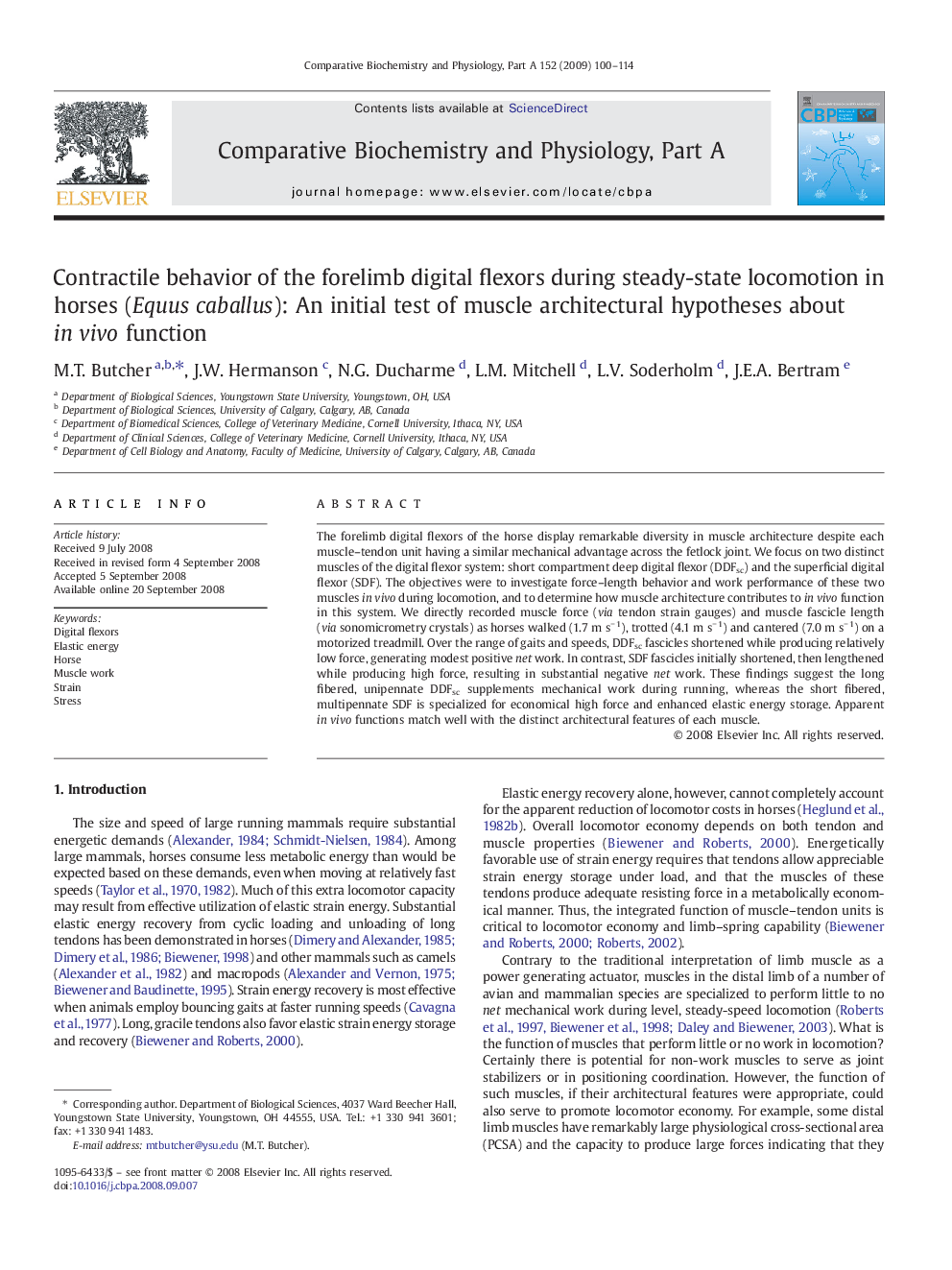| Article ID | Journal | Published Year | Pages | File Type |
|---|---|---|---|---|
| 1973809 | Comparative Biochemistry and Physiology Part A: Molecular & Integrative Physiology | 2009 | 15 Pages |
The forelimb digital flexors of the horse display remarkable diversity in muscle architecture despite each muscle–tendon unit having a similar mechanical advantage across the fetlock joint. We focus on two distinct muscles of the digital flexor system: short compartment deep digital flexor (DDFsc) and the superficial digital flexor (SDF). The objectives were to investigate force–length behavior and work performance of these two muscles in vivo during locomotion, and to determine how muscle architecture contributes to in vivo function in this system. We directly recorded muscle force (via tendon strain gauges) and muscle fascicle length (via sonomicrometry crystals) as horses walked (1.7 m s− 1), trotted (4.1 m s− 1) and cantered (7.0 m s− 1) on a motorized treadmill. Over the range of gaits and speeds, DDFsc fascicles shortened while producing relatively low force, generating modest positive net work. In contrast, SDF fascicles initially shortened, then lengthened while producing high force, resulting in substantial negative net work. These findings suggest the long fibered, unipennate DDFsc supplements mechanical work during running, whereas the short fibered, multipennate SDF is specialized for economical high force and enhanced elastic energy storage. Apparent in vivo functions match well with the distinct architectural features of each muscle.
